One of the greatest Cup finals to have taken place in recent memory.
Arguably, football’s greatest rivalry provided a spectacle for the footballing world in the Scottish League Cup final.
The Old Firm faced off for the second time this season, and with a trophy on the line, tensions were even higher than their usual astronomical standards.
Not only did Rangers and Celtic have a cup final to contest but it proved to be a moment of immense history.
Both teams were tied in major trophies, having won 118 honours each.
This was Celtic’s opportunity to surpass Rangers for the first time since the 1930s, abolishing the constant reminders that the Teddy Bears have often given their archrivals about their success.
Several weeks ago, not even the most optimistic Rangers fans would have felt confident about their team’s chances of winning the League Cup.
Having been easily dispatched by Celtic in September, Rangers’ form had been horrific, leaving them languishing in third place.
Celtic were incredibly consistent, having only lost one match all season, which was away to last season’s UEFA Champions League finalists, Borussia Dortmund, in this season’s edition of the same competition.
Yet Rangers have been revitalised over the past month.
Impressive performances against Tottenham and Nice in the UEFA Europa League, along with the form of forwards Danilo and, most notably, Hamza Igamane, had given the Gers a newfound belief.
The game didn’t disappoint.
After an intense start, Rangers took the lead just before half-time through Nedim Bajrami.
Celtic began to dominate proceedings, with Greg Taylor and Daizen Maeda scoring two goals quickly.
Rangers didn’t give in easily, and after regaining control of the game, Mohamed Diomande scored the vital equaliser.
The Hoops looked as if they had won it when the impressive Nicolas-Gerrit Kühn finished off a counterattack in the 87th minute.
Danilo had other ideas, heading home a Václav Černý cross just two minutes later.
After both teams cancelled each other out in extra time, Celtic clinched victory through a 5-4 victory on penalties.
From two teams that have appeared to be so distant in quality this season, how did Rangers manage to put the Bhoys under such pressure?
Celtic Vs Rangers Lineups
Celtic lined up in their traditional 4-3-3.
Kasper Schmeichel started in nets behind a defence of Alistair Johnston, Cameron Carter-Vickers, Auston Trusty and Greg Taylor.
The midfield three was made up of Paulo Bernardo, captain Callum McGregor and Reo Hatate.
Kyogo Furuhashi, the centre-forward who is often Rangers’ nemesis, led the line, with Kühn and Maeda on either side.
Rangers lined up in a 4-2-3-1.
Jack Butland started between the sticks.
The defence consisted of James Tavernier, Leon Balogun, Robin Pröpper and Jefté.
Nicolas Raskin and Diomande were the double pivots in the midfield, with Bajrami given the number 10 role in front.
In-form Moroccan striker Hamza Igamane, Ianis Hagi and Černỳ took their places in the front three.
Rangers Defensive Game Plan
It was evident from the start that Rangers wouldn’t allow Celtic to quickly progress possession.
This occurred when the Teddy Bears took up a mid-block that prevented Celtic from playing the ball into the middle of the pitch.
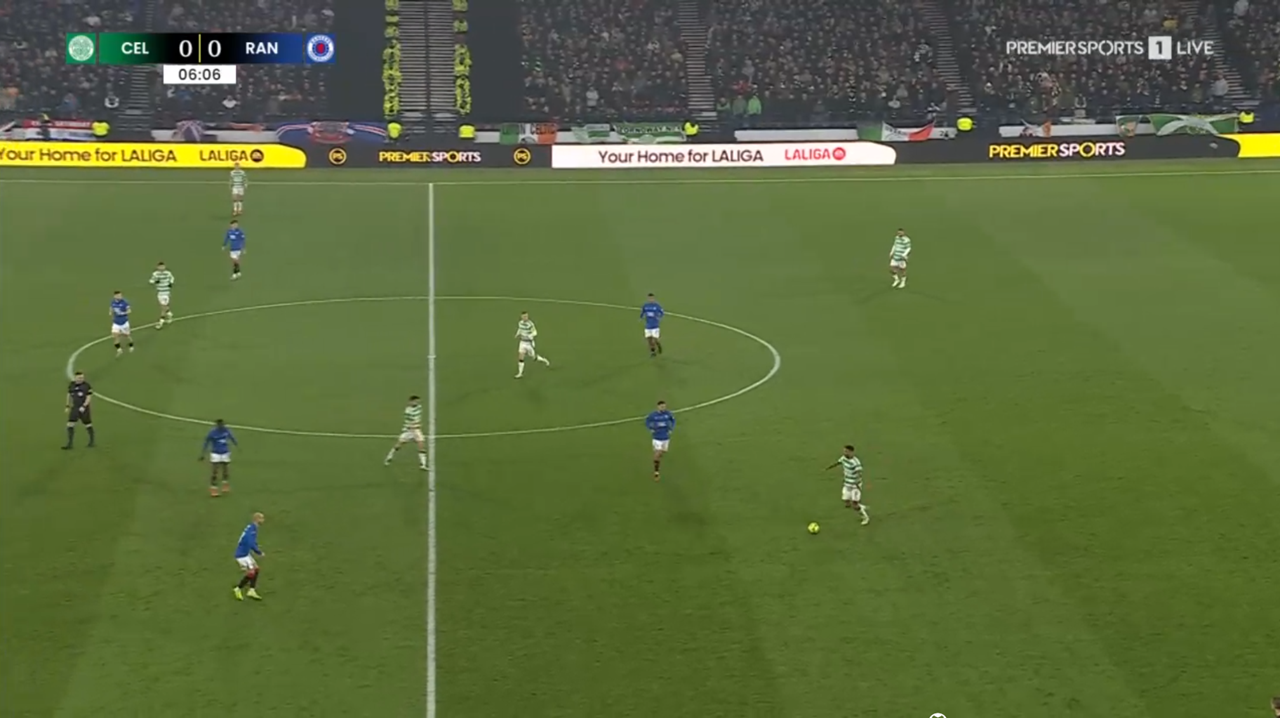
Here, you can see that Rangers’ midfield four is incredibly compact, and Igamane and Bajrami are doing an excellent job screening Celtic’s deep-lying playmakers, who are vital in their build-up play.
This is evident from the lack of forward passes that Celtic managed to play in between the lines.
Despite often overloading the middle of the park with their three midfielders, Taylor playing as an inverted full-back at times, and Kyogo dropping between the lines, Celtic couldn’t regularly penetrate the middle of the pitch during the build-up.
Celtic’s key players’ lack of success was a great indicator of how well Rangers were stifling their opposition’s chances of infiltrating their defensive structure.
Kyogo Furuhashi Touch Map
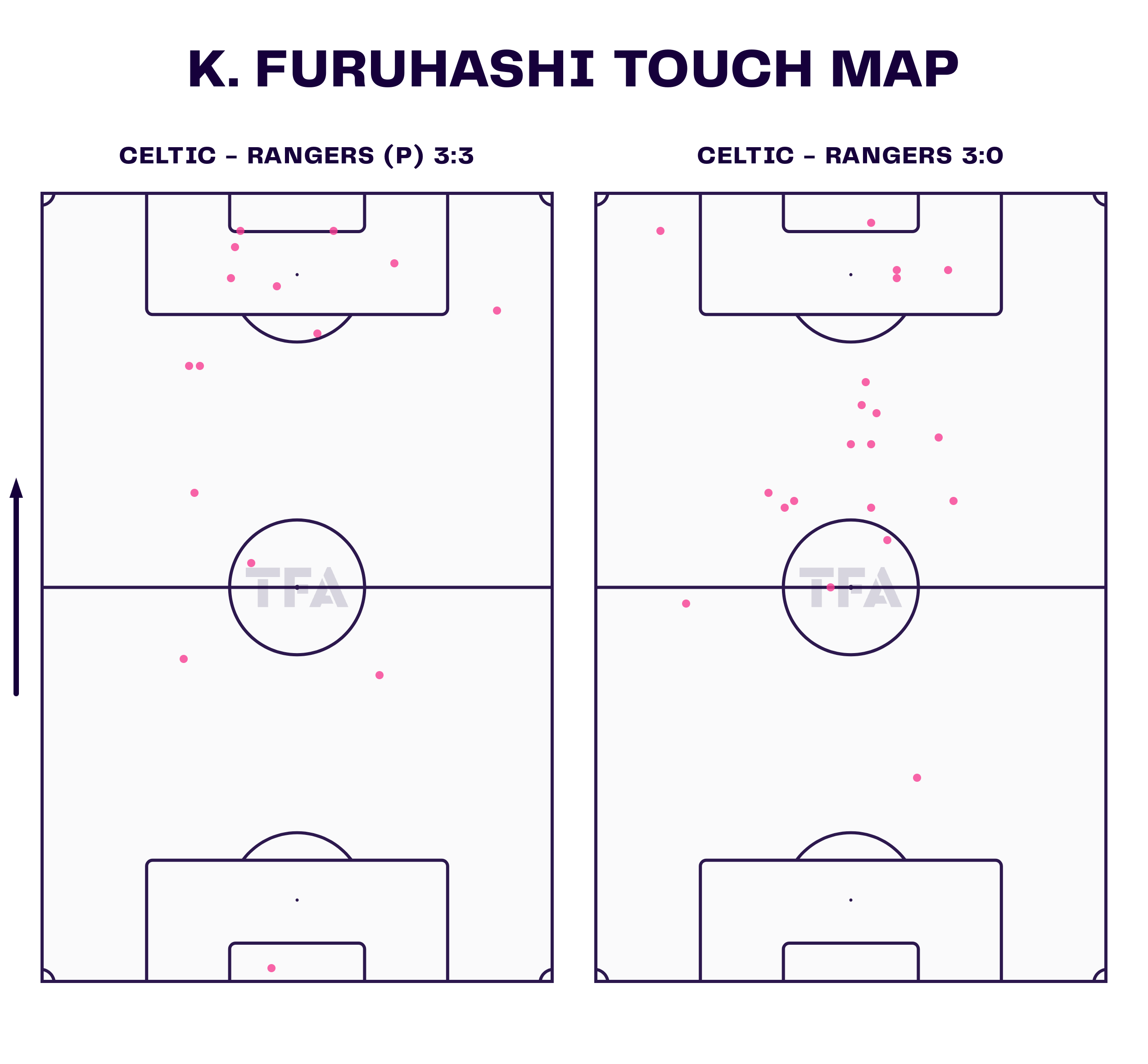
The number of touches Kyogo managed to have between the lines compared to September’s Old Firm clash highlights how hard Rangers worked for Celtic to penetrate them.
Callum McGregor posted below average statistics for passes received and forward passing accuracy, again highlighting Rangers ability to stop Celtic’s most influential players getting a grip on the game.
Impressively, Rangers reacted superbly anytime Celtic got a sniff of progress through the middle of the park.
As the ball travelled to a player between the lines, Rangers midfield pivot of Diomande, particularly Raskin, played with incredible aggression to prevent forward passes.
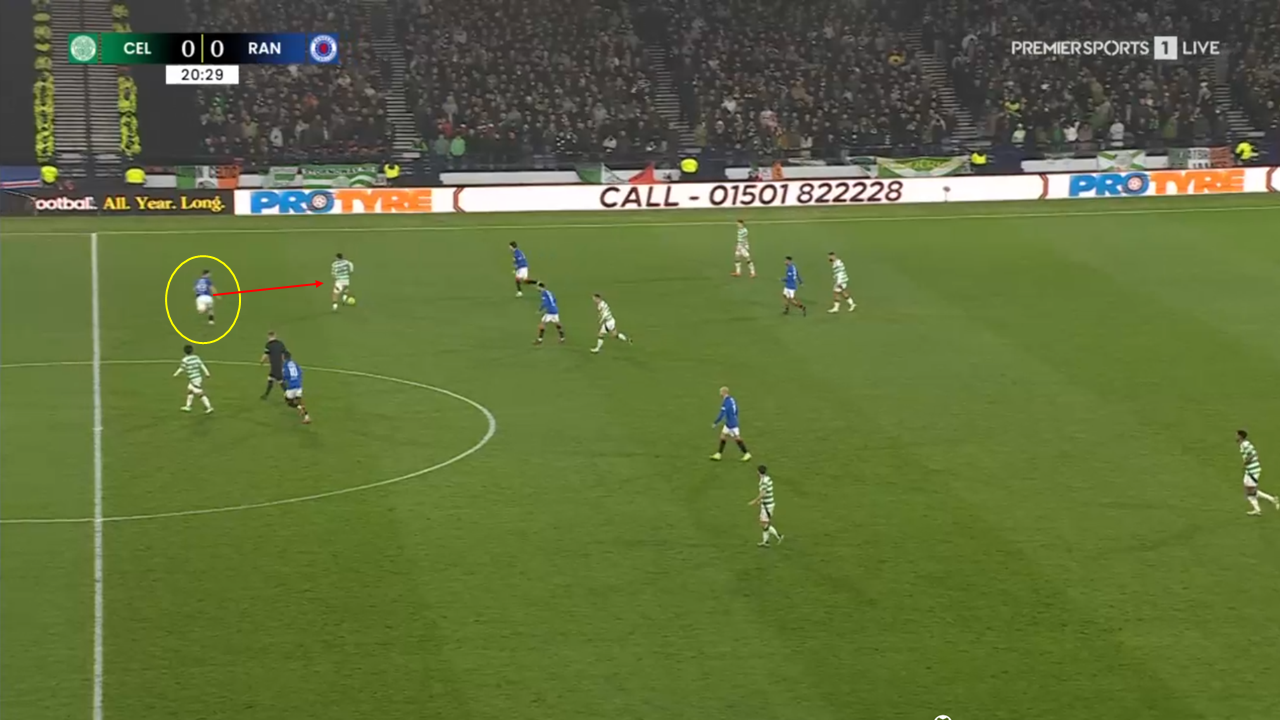
In this situation, as the ball travels through to Bernardo, beating Rangers first line of defence, Raskin presses with incredible intensity and forces the midfielder wide, stopping him from progressing play further.
How Celtic Managed To Progress
When you can’t play through your opposition, there are two other methods for progressing play.
You either play around or play over.
Celtic managed to utilise both of these options particularly well.
Rangers will have been wary of Celtic’s strength in wide areas.
German wide man Kühn has already scored an incredible 12 goals and nine assists this season, and Japanese international Maeda has contributed significantly with 11 goals and four assists.
Celtic’s success from wide areas was clearly evident in the last Old Firm tie, when Celtic’s dangerous crosses and box passes caused Rangers real problems.
Celtic Progressive Passes Map
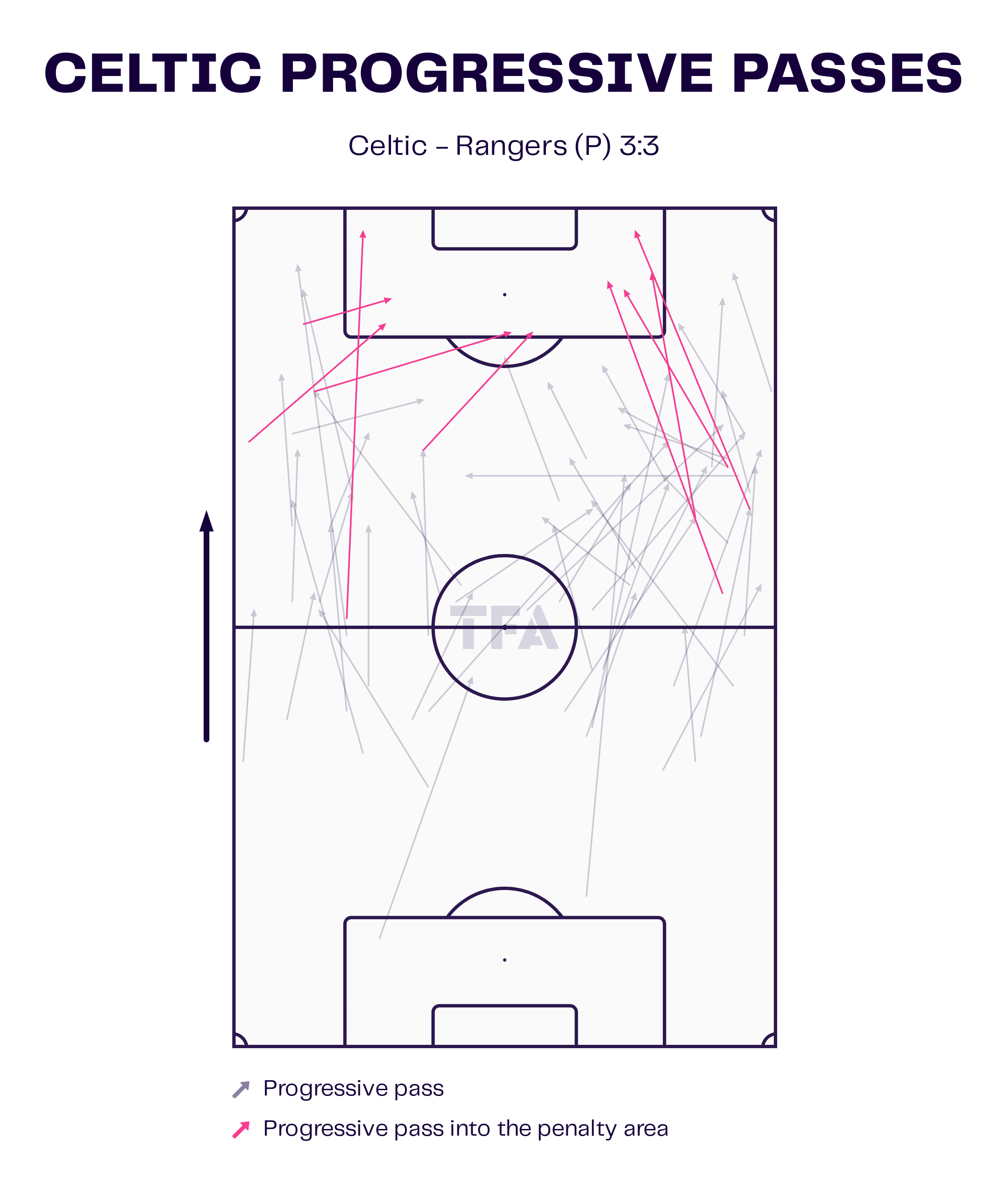
Celtic’s progressive passes showed that the majority were directed to wide areas, which helped to free up their dangerous wide players.
Rangers did appear early on in the game to be able to limit the effect Celtic’s wide attacks had.
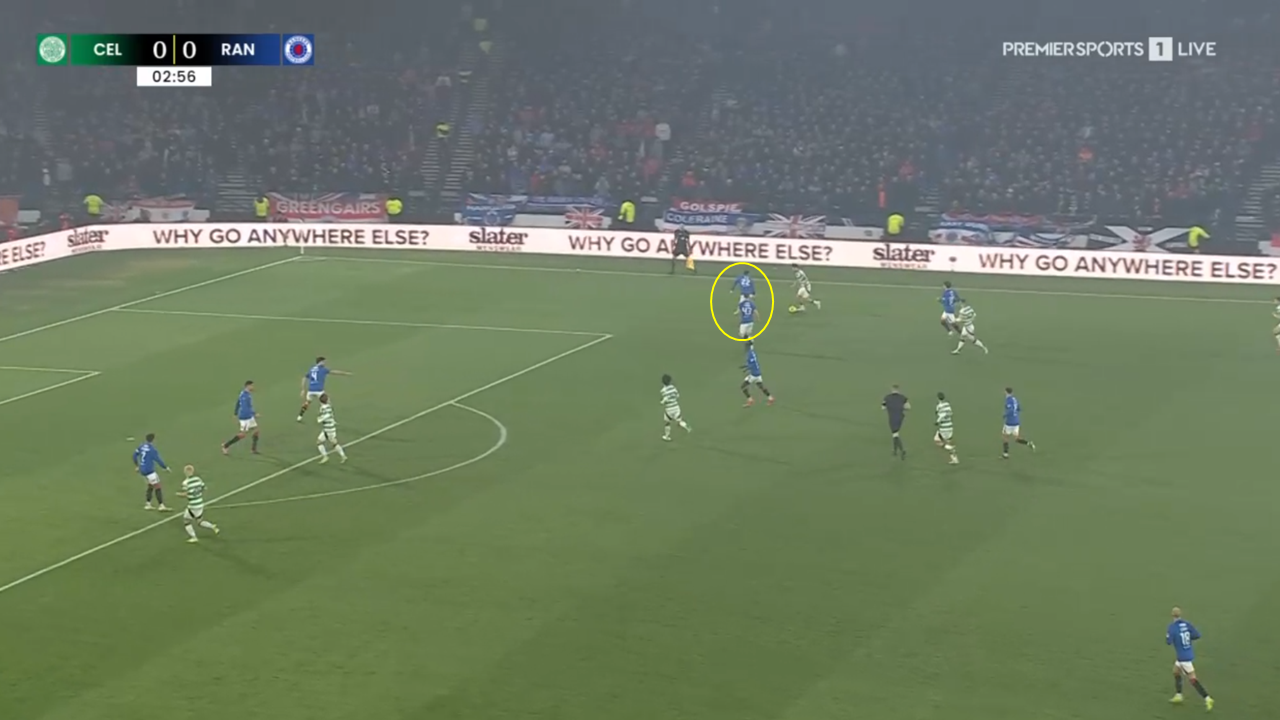
As the dangerous Kühn breaks down the line, Jefté is accompanied by Raskin, who helps stop the winger from progressing into the box.
Celtic Crossing Zones Map
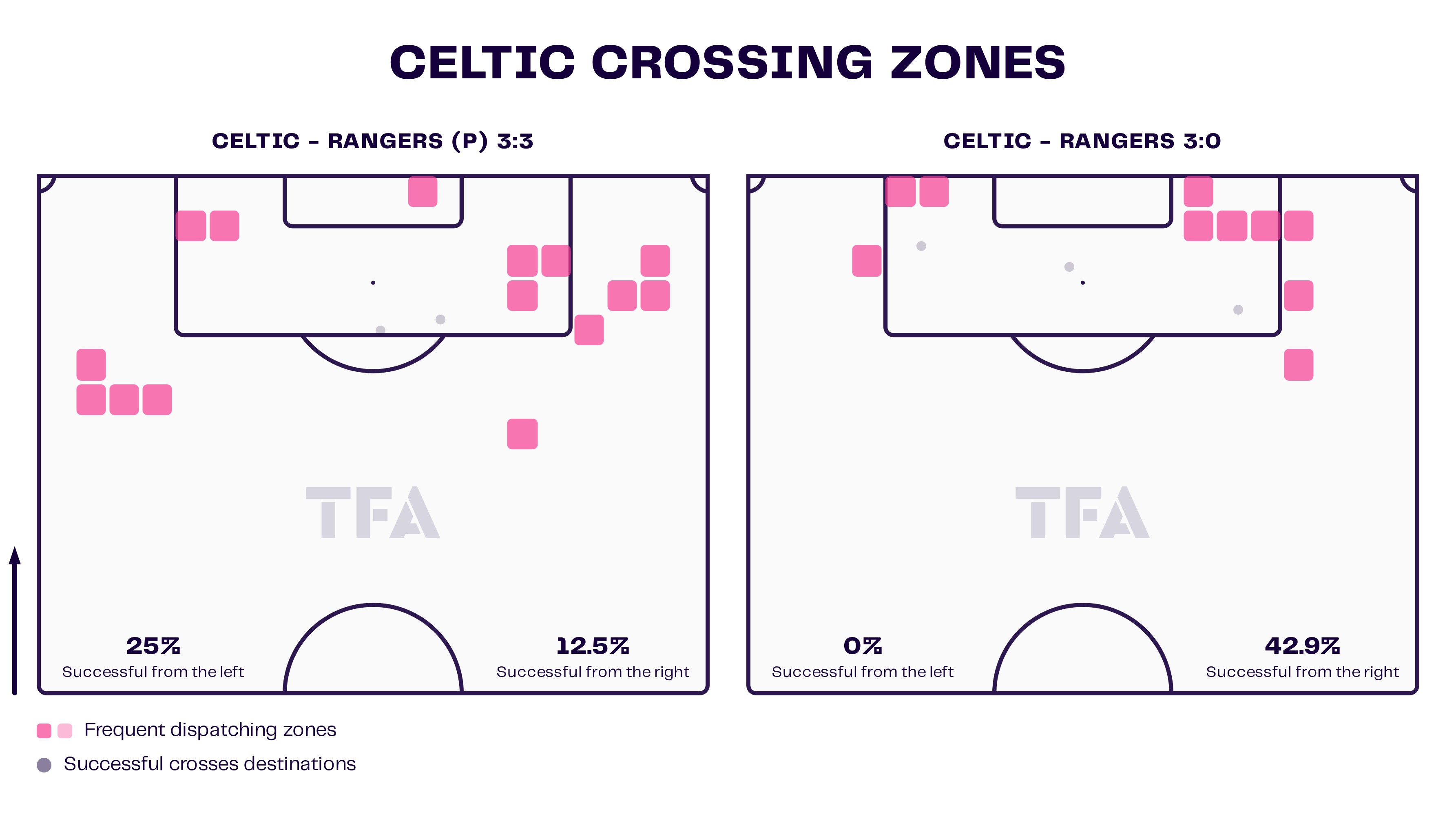
When comparing the crossing zones of the last Old Firm encounter, it’s evident that Celtic didn’t have as much success with crosses.
As highlighted, they were prevented from getting into the prime areas for crosses to be delivered.
Celtic also threatened with dangerous balls over the top of Rangers defence, looking to exploit the space left in behind.
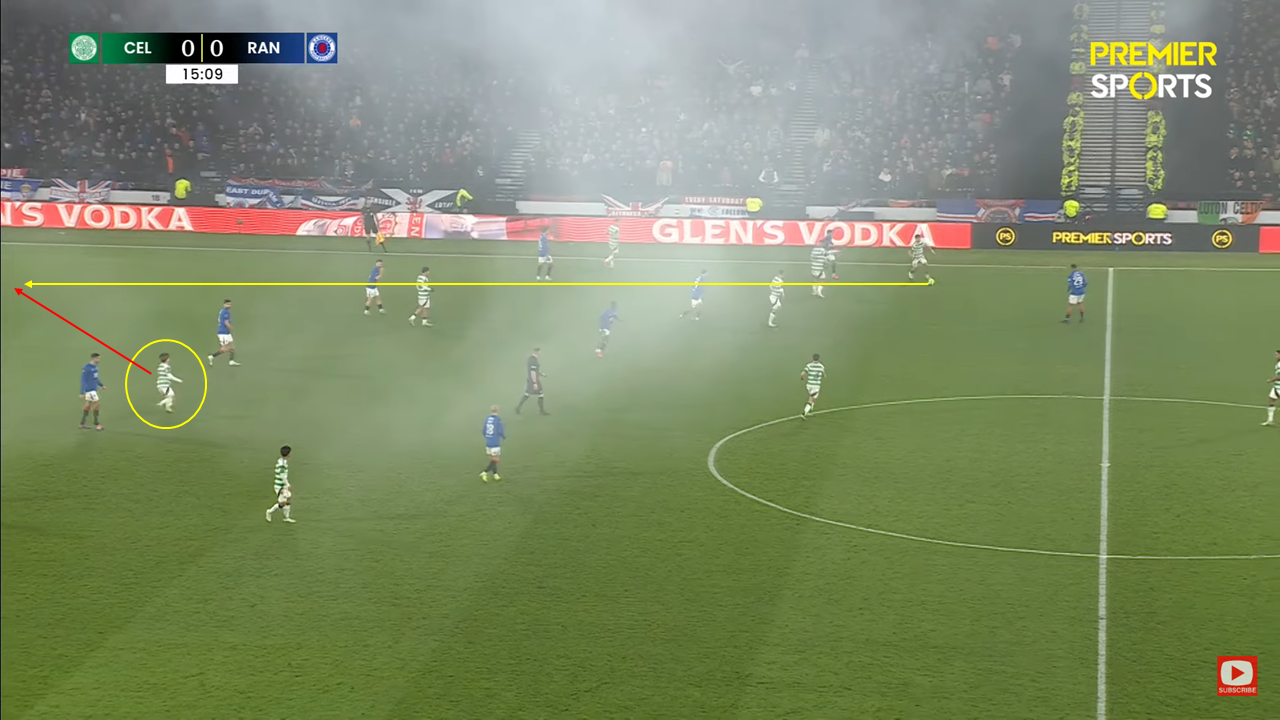
Here, Kyogo makes a deadly run in behind the backline and manages to get a shot off on goal.
Rangers On The Counter
Rangers had a clear attacking game plan.
They wanted to counter as quickly as possible.
This came from clear traps that Phillipe Clement set.
As Celtic’s backline would pass the ball square or into the feet of a midfielder dropping deep, Rangers would pounce aggressively.
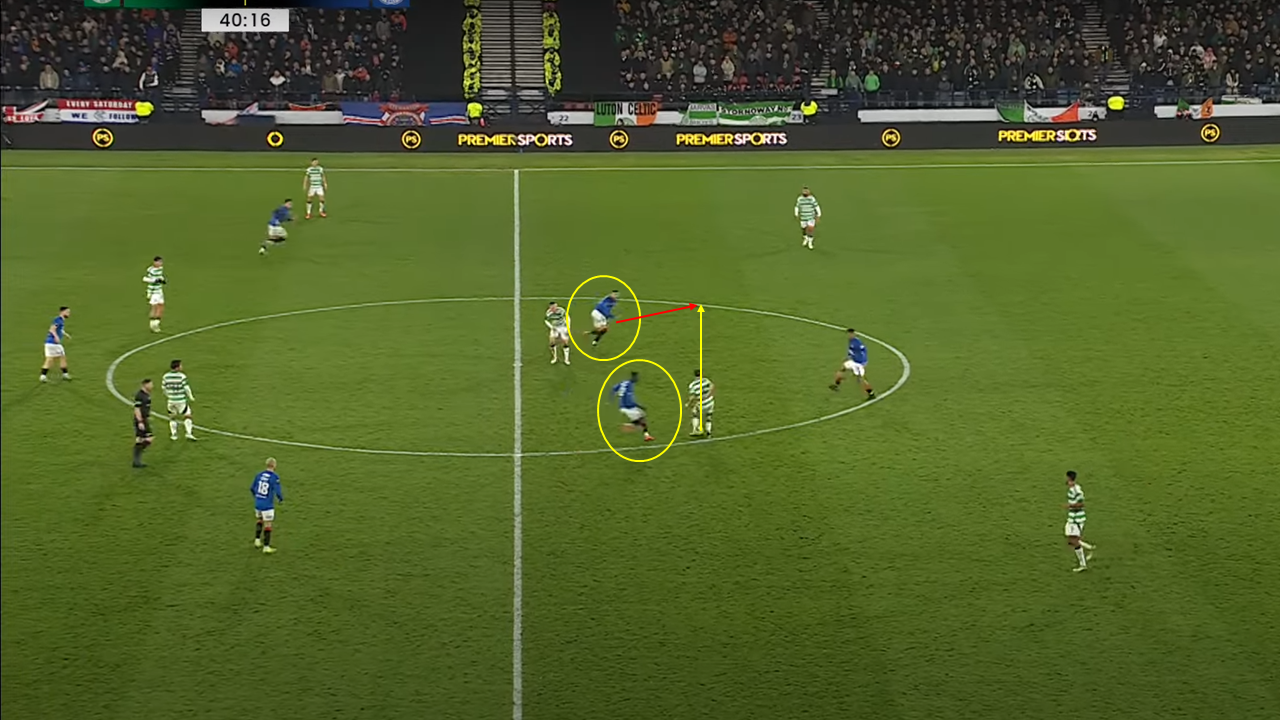
In this situation, Taylor has come inside as the inverted full-back.
Diomande has pressed him intensely, limiting his options.
This traps him and forces him to pass to Carter-Vickers, his only free option. Bajrami reads the trigger and pounces on Taylor’s pass.
This allows Rangers to break and score.
As highlighted from the high regains map, Rangers made a remarkable 20 high regains with an even more impressive 10 dangerous recoveries highlighting their clear intentions to punish Celtic’s mistakes.
Rangers managed to score the match’s opening goal from one of these quick counterattacks.
Yet, they will rue the missed opportunities that their excellent defensive work awarded them with.
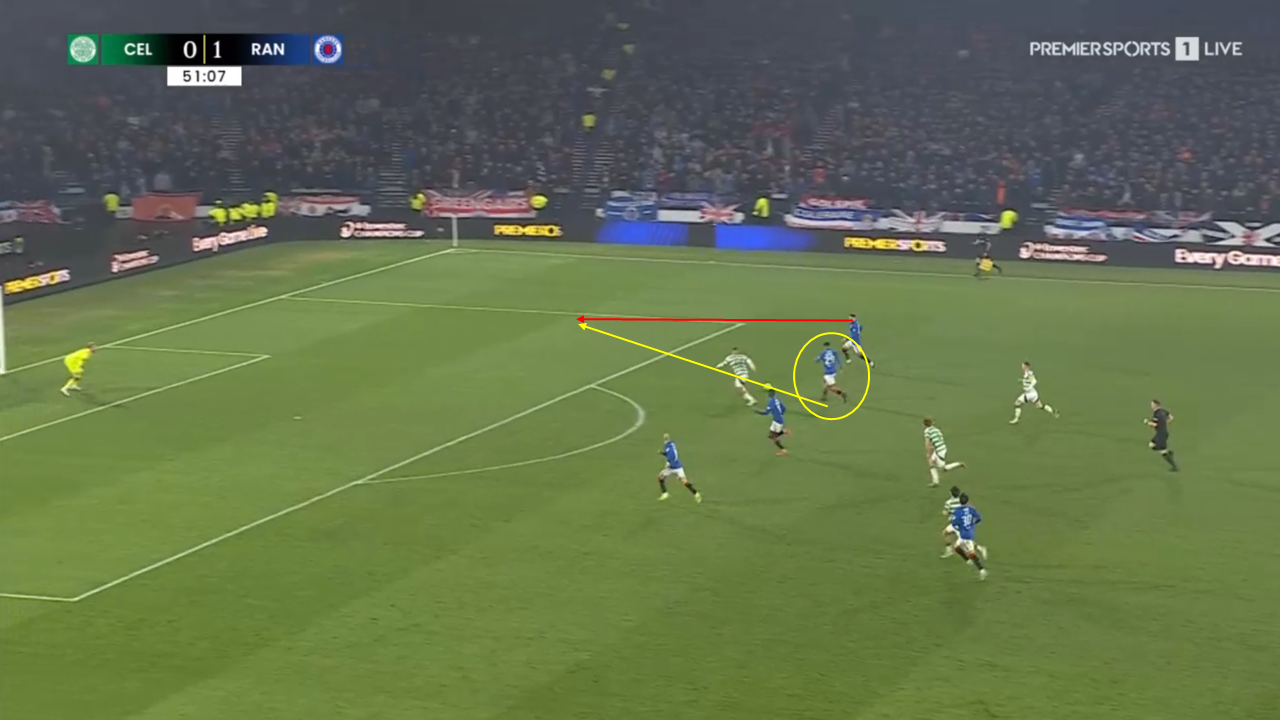
In one break after Rangers have regained possession, they find themselves in a 4v1 situation.
Igamane plays in his teammate Bajrmi who cannot cross the ball, wasting a glorious chance.
This was the story of many of Rangers’ attacks.
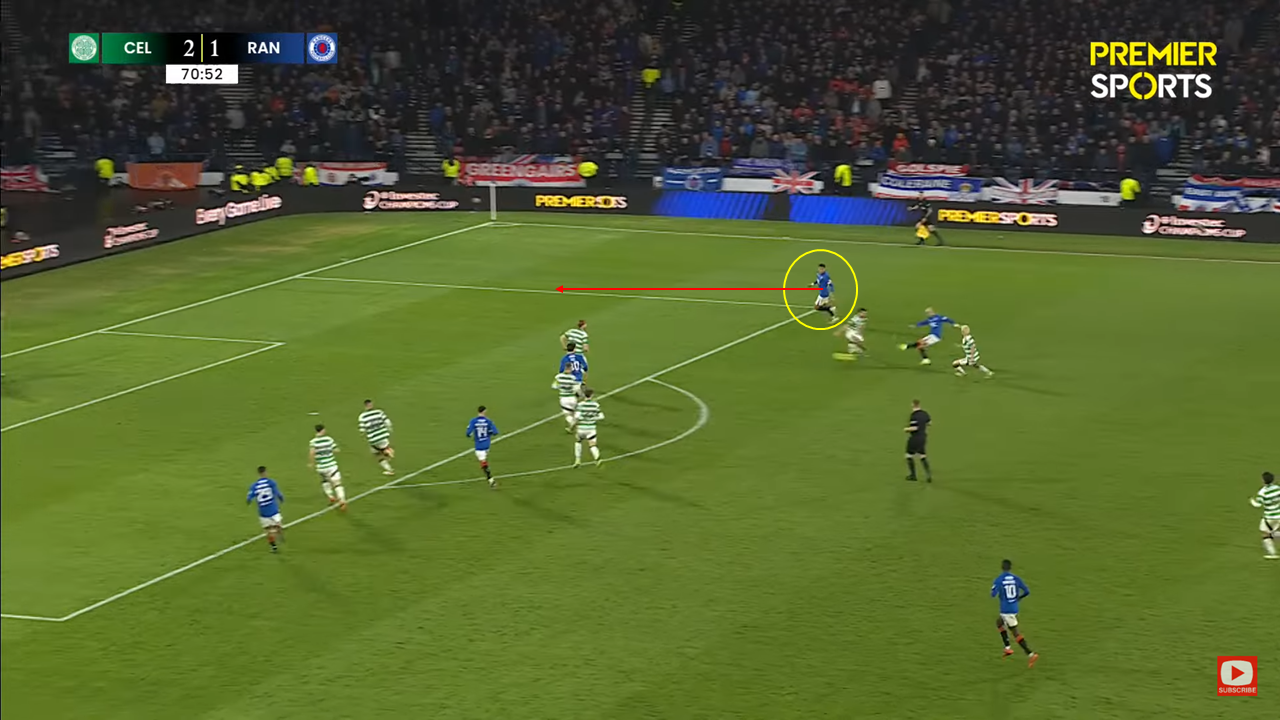
Here, we see Černỳ running down the wing, and an overlapping run from captain James Tavernier supports him.
If the Czech decides to slide in his teammate, Tavernier will have an excellent position to cross from. Černỳ then has a shot from a distance that’s easily saved.
How Celtic Broke Down Rangers
Taylor and Maeda scored Celtic’s first two goals.
However, you couldn’t say they came from the high-quality approach we associate with Celtic.
Taylor scored from a wicked deflection and Maeda chased a loose back pass before slotting the ball away.
Yet one area that looked destined to pay dividends beyond all others was that of Celtic’s rank flank.
The constant bombardment of attacks was having its toll on a Rangers side that had gone toe to toe with Premier League side Tottenham Hotspur on Thursday night.
Nicholas Kühn Winger Actions
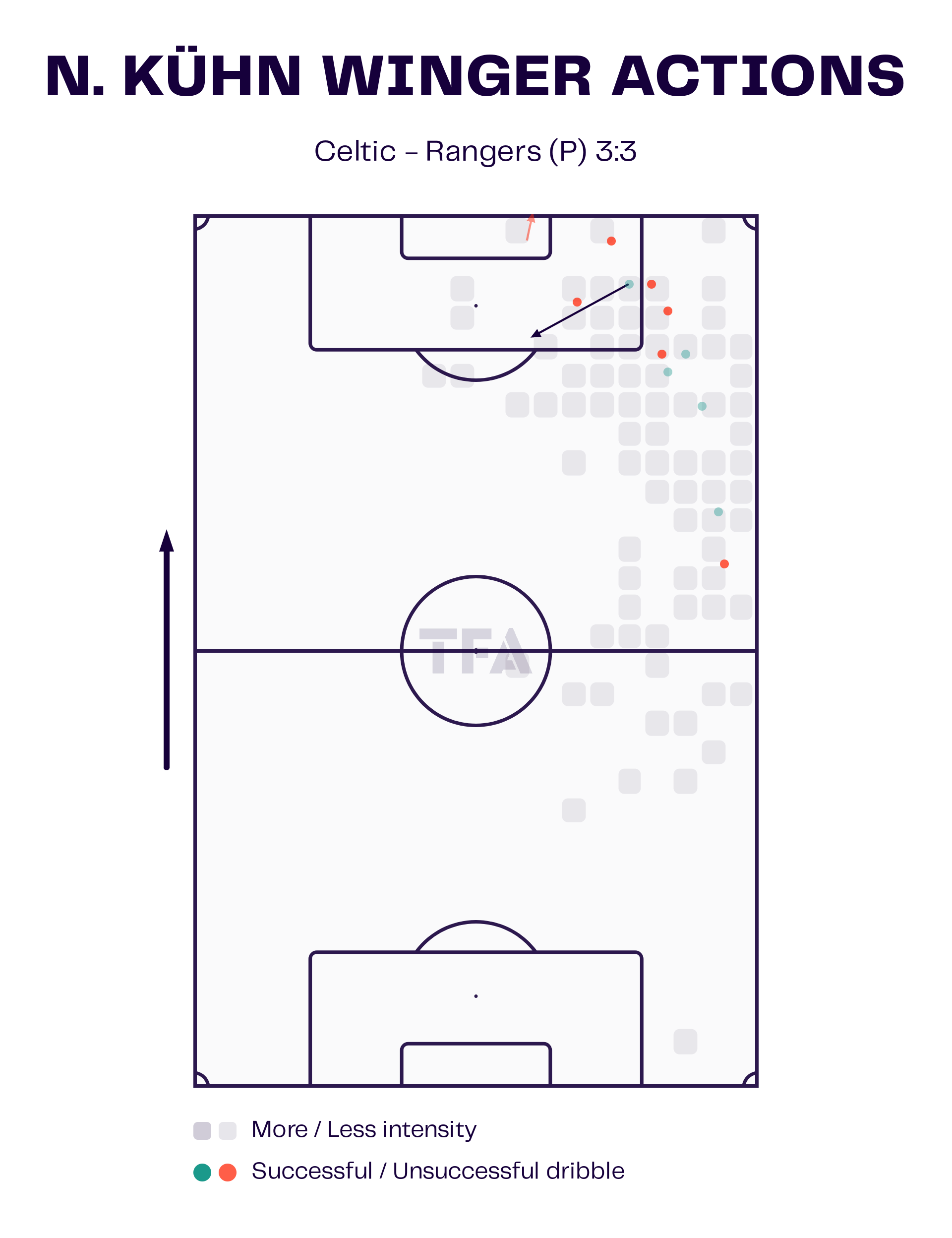
Nicolas Kühn’s actions demonstrate his involvement.
He made several successful dribbles, which allowed him to reach incredibly dangerous areas.
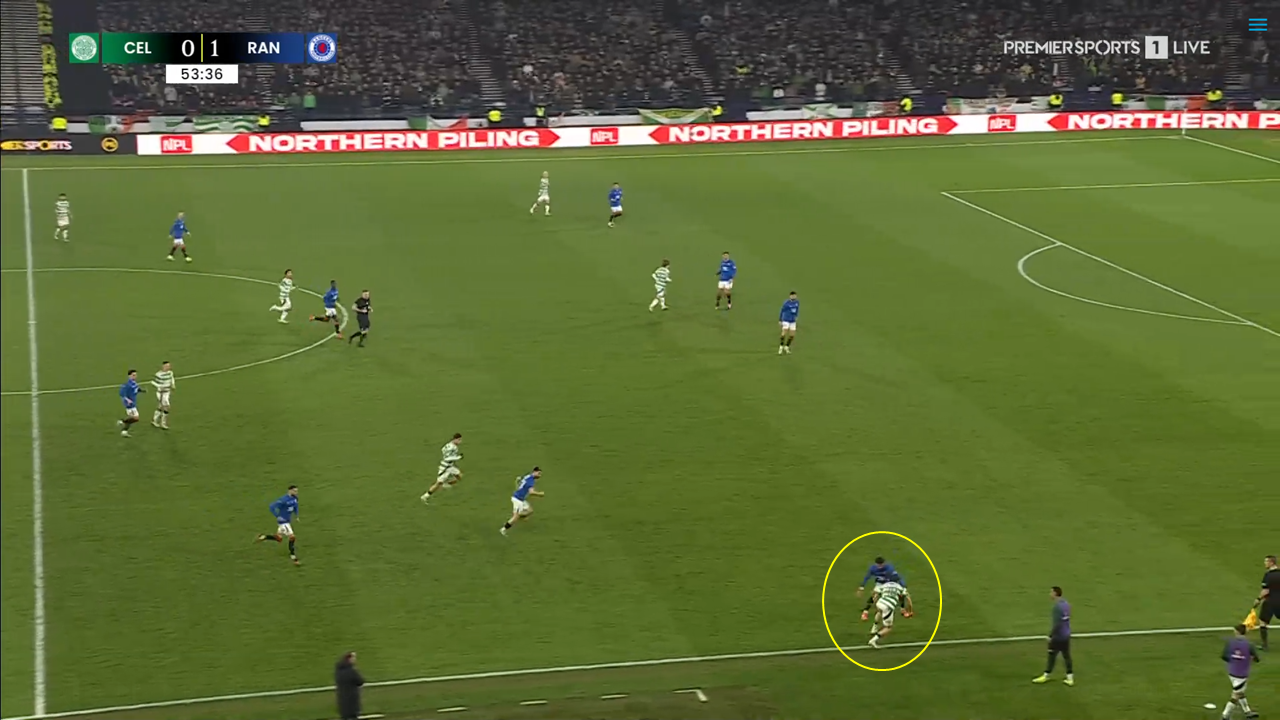
Here, Kühn is isolated in a 1v1 against Jefté.
As clearly seen, Rangers are no longer compact, and as Kühn beats his Brazilian opponent, no one is in a position to provide the necessary support.
Tired legs and a lack of concentration allowed the former Rapid Wien player to break through and commence the attack that led to Celtic’s third goal.
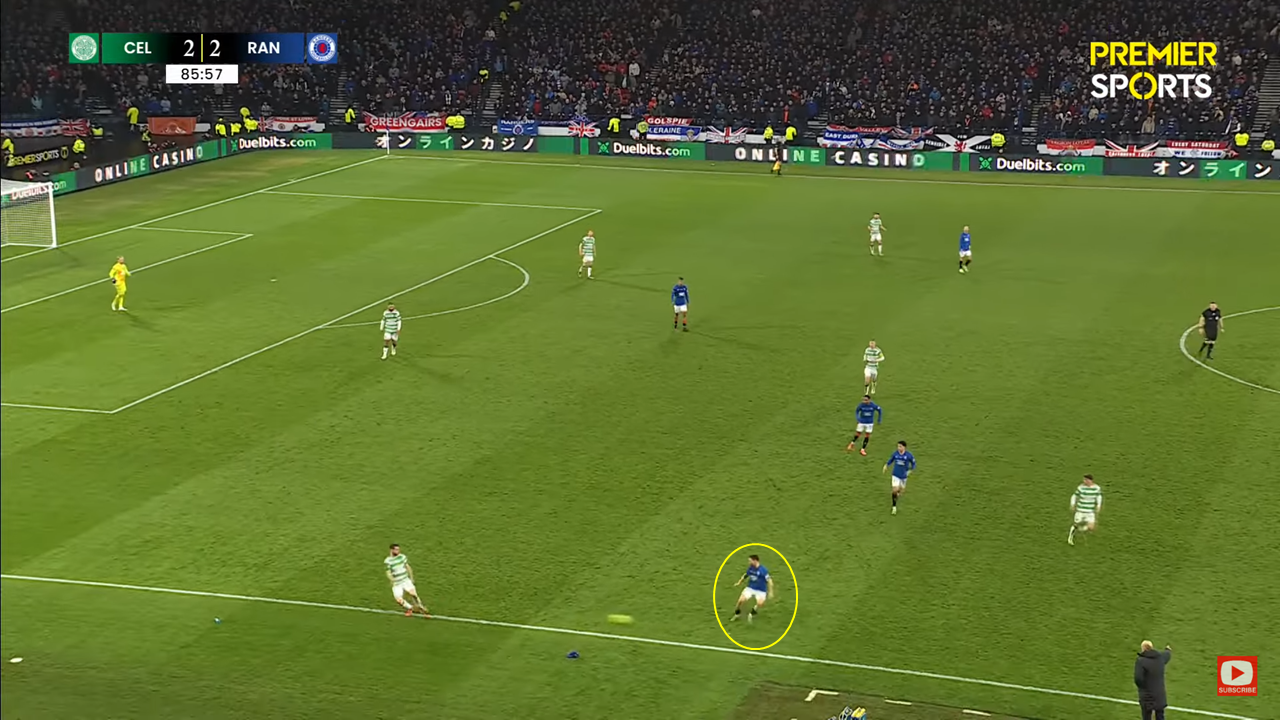
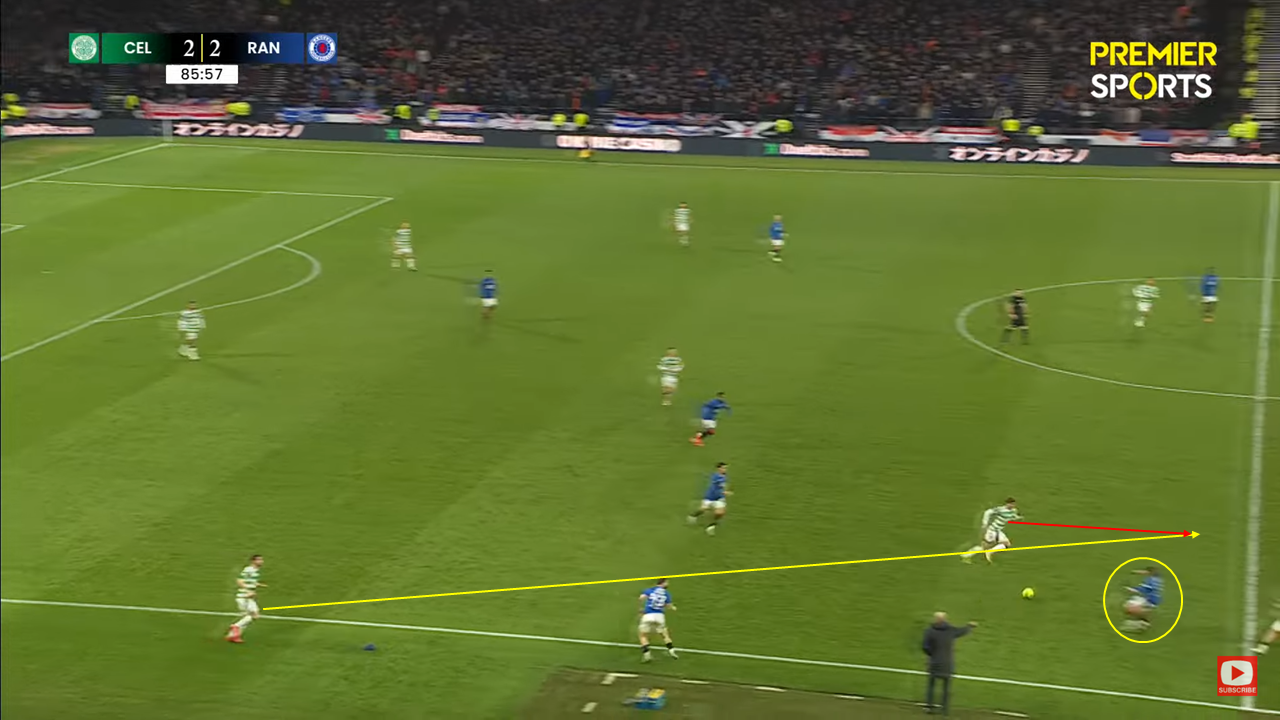
Raskin, who was immense all game, hadn’t the energy to cut out a pass made down the right flank, while substitute full-back Yilmaz had completely lost sense of his position, leaving Kühn free.
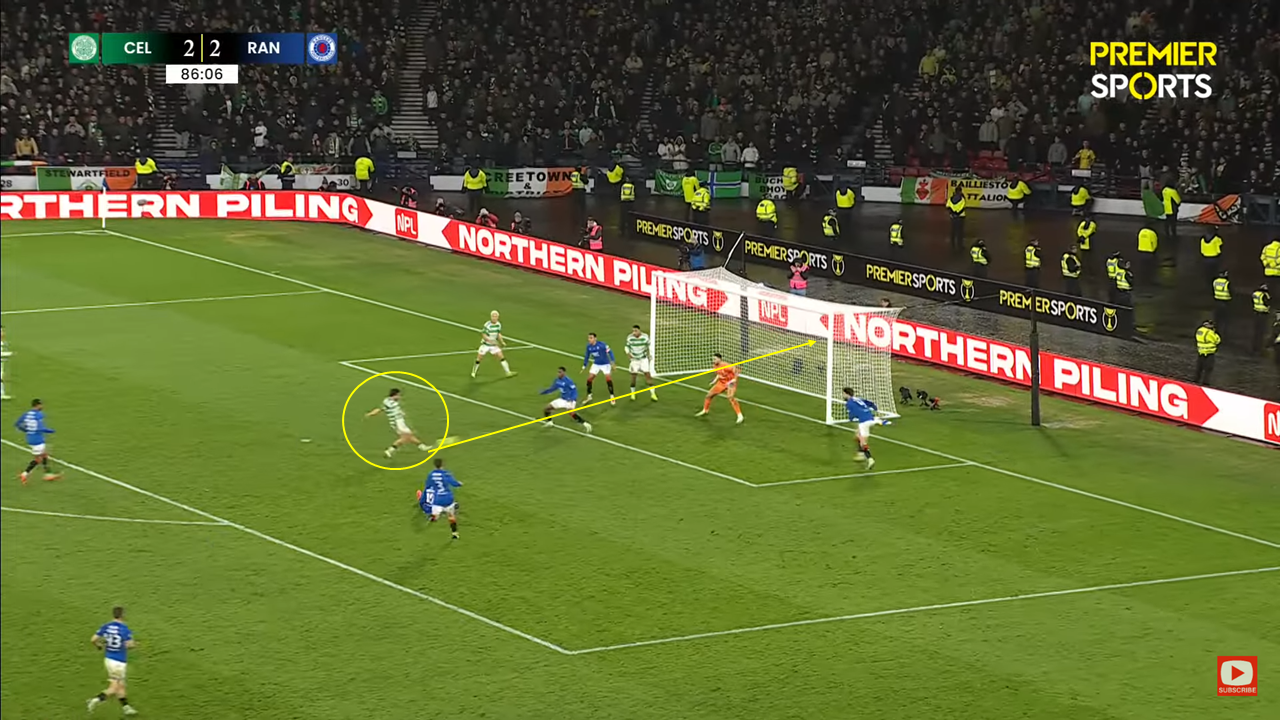
He then eventually makes his way into the box and scores an easy tap-in after he’s been found by a low cross.
Conclusion
This game meant everything to the supporters.
Brendan Rodgers played down the significance of this tie during the build-up to the fixture.
Yet, he will take enormous pride in being responsible for Celtic becoming Scotland’s most successful club.
This caps an excellent first half of the season. Rodgers is eyeing another domestic treble.
Philippe Clement will be hurt, and despite seemingly improving Rangers’ form, he’s once again under pressure.
Failing to beat Celtic and losing two Cup Finals to their great rivals will have fans demanding better.
Rangers appear to be on an upward trajectory and hope they can beat Celtic in their next clash less than a month away in the Scottish Premiership.
A victory for Celtic could see another manager leave Ibrox, revealing many of the cracks that Rangers’ recent run of form has covered up.

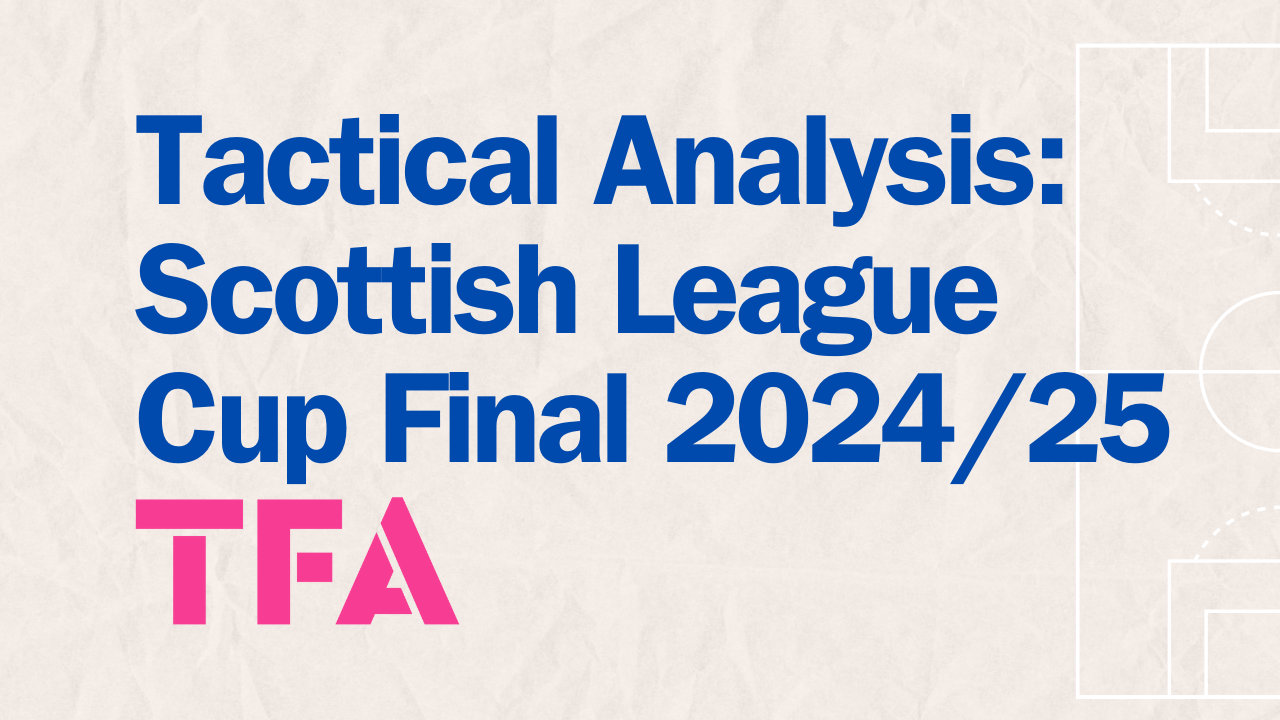



Comments